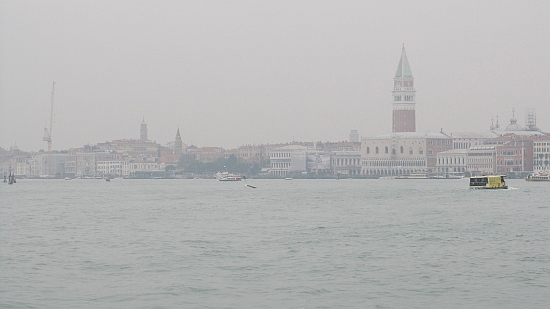
Yesterday one of the most important days in the Venetian (hence in my) calendar came around again: the annual feast of La Madonna della Salute, Our Lady of Health.
Health is one of those things, like air or the ability to speak your mother tongue, that you don’t give much thought to till it’s been impaired. Or removed.
In a city that has the highest median age of any city in Italy, health is a subject that’s right up there on the short list of things to really worry about, several places ahead of acqua alta and even a close second to tourism. Considering that the city government is currently debating (or not — I can’t keep track) whether to close the hospital here and send everybody who needs help to the big hospital on the mainland (pause for screams of rage and disbelief), health is clearly a big issue.
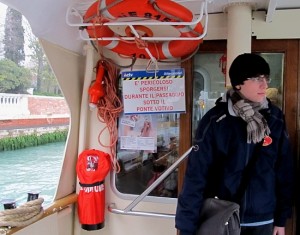
But let us return to the health at hand. This feast was established in 1630 in thanksgiving for the Madonna’s response to the desperate plea of the city of Venice for deliverance from arguably the worst plague in its history, though the pestilence of 1574 was also noticeably catastrophic.
If anyone (such as me) has ever tried to imagine what an epidemic of plague might entail, a few passages from “The Betrothed” by Alessandro Manzoni might help. They certainly provide a way to grasp the magnitude of this festa (not to mention the votive church, which took 50 years to build).
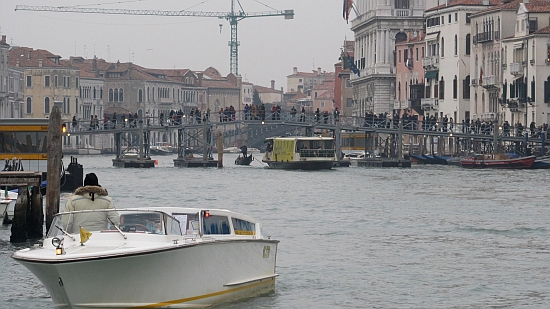
The plague of 1630 exterminated much of northern Italy, and drawing on contemporary documents, Manzoni describes the plague in Milan. I presume that it was much the same in Venice, where 80,000 Venetians died, including the doge, though here the carts obviously were replaced by boats.
…sickness and deaths began rapidly to multiply…with the unusual accompaniments of spasms, palpitation, lethargy, delirium, and those fatal symptoms, livid spots and sores; and these deaths were, for the most part, rapid, violent, and not unfrequently sudden, without any previous tokens of illness….
All the doorways into the streets were kept shut from either suspicion or alarm, except those which were left open because deserted or invaded; others nailed up and sealed outside, on account of the sick or dead who lay within; others marked with a cross drawn with coal, as an intimation to the monatti [men who removed the bodies] that there were dead to be carried away….
Everywhere were rags and corrupted bandages, infected straw, or clothes, or sheets, thrown from the windows; sometimes bodies, which had suddenly fallen dead in the streets, and were left there till a cart happened to pass by and pick them up, or shaken from off the carts themselves, or even thrown from the windows….
And while corpses, scattered here and there, or lying in heaps…made the city like one immense sepulchre, a still more appalling symptom, a more intense deformity, was their mutual animosity, their licentiousness, and their extravagant suspicion…not only did they mistrust a friend, a guest; but those names which are the bonds of human affection, husband and wife, father and son, brother and brother, were words of terror, and dreadful and infamous to tell! the domestic board, the nuptial bed, were dreaded as lurking-places, as receptacles of poison…
Men of the highest rank might be seen without cape or cloak, at that time a most essential part of any gentleman’s dress; priests without cassocks, friars without cowls; in short, all kinds of dress were dispensed with which could contract anything by fluttering about…And besides this carefulness to go about as trussed up and confined as possible, their persons were neglected and disorderly; the beards of such as were accustomed to wear them grown much longer, and suffered to grow by those who had formerly kept them shaven; their hair, too, long and undressed, not only from the neglect which usually attends long depression but because suspicion had been attached to barbers…
The greater number carried in one hand a stick, some even a pistol, as a threatening warning to anyone who should attempt to approach them stealthily; and in the other, perfumed pastils, or little balls of metal or wood, perforated and filled with sponges steeped in aromatic vinegar, which they applied from time to time, as they went along, to their noses, or held there continually.
Some carried a small vial hung around their neck, containing a little quick-silver, persuaded that this possessed the virtue of absorbing and arresting every pestilential effluvia; this they were very careful to renew from time to time…
Even friends, when they met in the streets alive, saluted each other at a distance, with silent and hasty signs. Every one, as he walked along, had enough to do to avoid the filthy and deadly stumbling-blocks with which the ground was strewn, and in some places even encumbered. Every one tried to keep the middle of the road, for fear of some other obstacle, some other more fatal weight, which might fall from the windows…
…the sick… were wandering about as if stupefied; and not a few were absolutely beside themselves: one would eagerly be relating his fancies to a miserable creature laboring under the malady; another would be actually raving; while a third appeared with a smiling countenance, as if assisting at some gay spectacle.
…two horses, which, stretching their necks and pawing with their hooves, could with difficulty make their way; and drawn by these a cart full of dead bodies, and after that another, and another, and another; and on each hand monatti walking by the side of the horses hastening them on with whips, blows, and curses. These corpses were for the most part naked, while some were miserably enveloped in tattered sheets, and were heaped up and twined together, almost like a nest of snakes unfolding themselves….at every trifling obstacle, at every jolt, these fatal groups were seen quivering and falling into horrible confusion, heads dangling down, women’s long tresses disheveled…
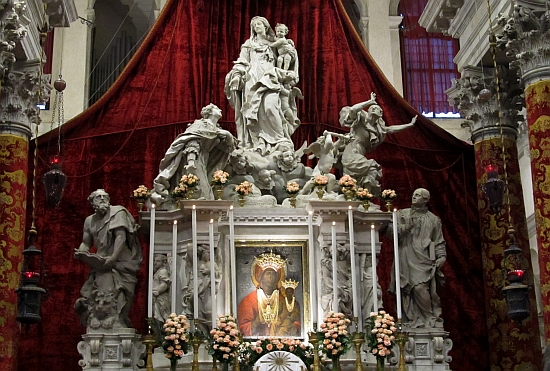
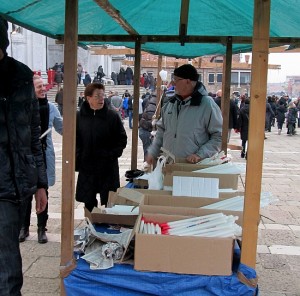
Not wishing to spoil the party, I think it’s not a bad idea to acknowledge at least briefly that the day was fixed to express gratitude (or desire) for heavenly intervention in matters of life and death, and not primarily so we could buy balloons of Nemo and Spiderman and eat cotton candy and slabs of deep-fried dough slathered with chocolate.
The weather was perfect, by which I mean cold, raw, damp, foggy, and breezy. I’ve been to the basilica of the Salute to offer my candle on days when it was sunny and the temperature in the sixties, and I can tell you that it just feels wrong. This isn’t a happy holiday, it’s a solemn, penitential, I-really-mean-this kind of day, even though there are plenty of balloons and highly sugared and fat-laden treats being sold from stalls behind the church. It’s probably years before Venetian kids grasp the fact that the day isn’t dedicated to Our Lady of Fat and Sugar. Amazing, now that I think of it, that she should be honored as the guardian of health with this payload of calories. They ought to depict her — no disrespect intended — holding an insulin syringe.
Back to the weather: The worse it is, the happier are the Ladies who Mink. I’ve remarked before that this city is an unrepentant recidivist on the animal-skin subject. (I don’t count shearling in this category.) One winter evening I counted 11 mink coats on the vaporetto going home. Someone I know told me about a little old lady on the Lido who was packing her steamer trunks for a holiday in the Dolomites with four peltish coats. This was the minimum a woman could rationally consider bringing; no telling what your friends would think if they should see you in the same old fur, day after day.
Therefore Lino refers to this legendary day as the feast of Our Lady of the Fur Coat. And laughs on the rare days when it turns out to be, as I mentioned, sunny and warm, because wearing their fur coat to the basilica is more important to these ladies than offering a candle for their husband, or maybe even for themselves. We enjoy imagining them hanging tough in the heat, wrapped in mink, wearing terrycloth headbands, like sweating tennis players.
Yesterday, though, I only saw one fur-like garment, and I am dead certain it was fake. This does not bode well, but I’m not sure for what.


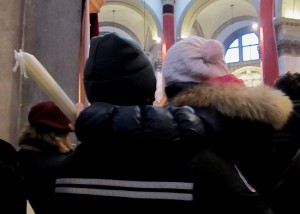
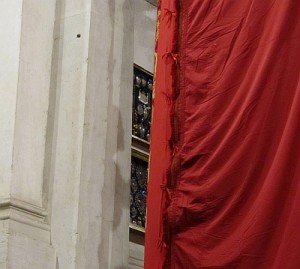
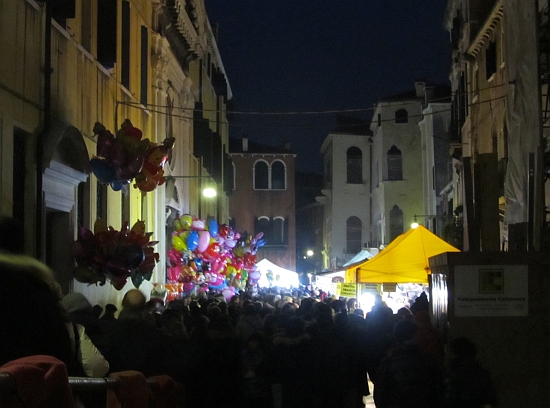
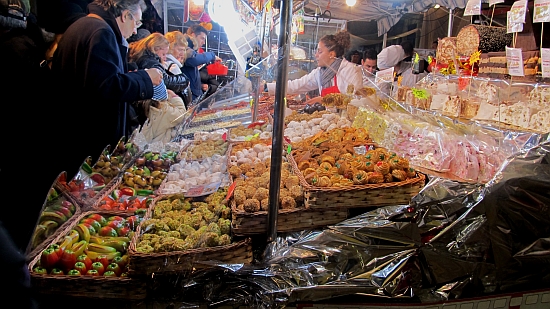
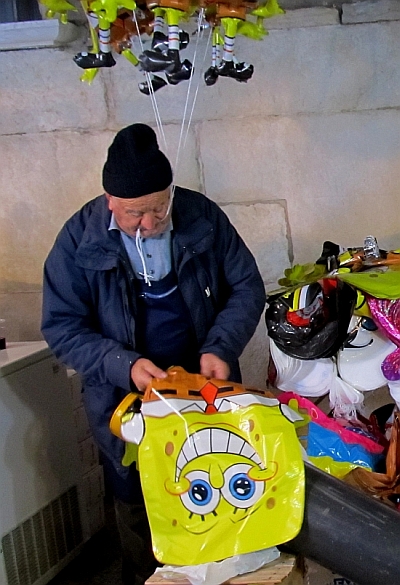
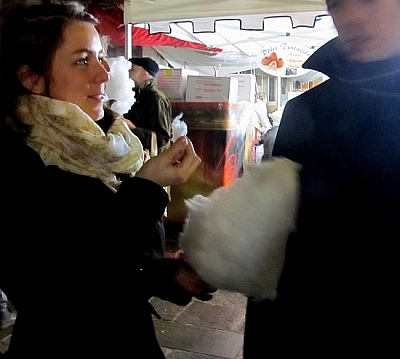

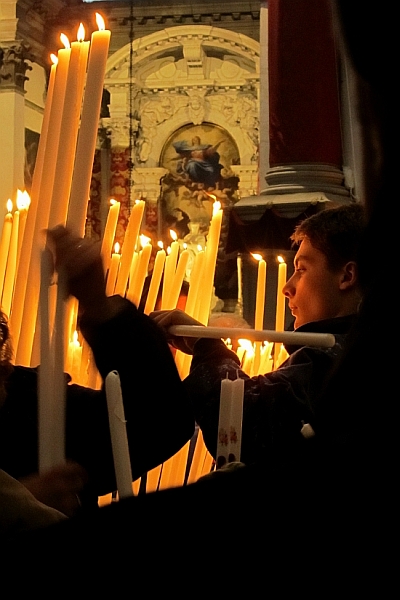
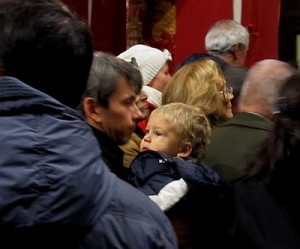
8 Comments
My husband and I impudently refer to the fur-wearing ladies as cinghiali.
That’s pretty good. One hopes they’re not the type of boars who are getting shot at by klutzy hunters who end up killing their friends instead. Every year, as you know, it’s the same story.
Thanks Erla for this post. The description of the plague is the best I’ve read. Can you imagine the smell!!
On another note I’ve told my mother-in-law, who has Italian forebears, that she would fit in well in Venice if she got a fur coat and a tiny dog on a string. She’s thinking about it.
I’m sure she’d be happy to find herself among like-minded women, at last. And actually, no — I’ve tried, but I can’t imagine the smell. I didn’t try very hard, though.
Bless you, my child, and good health for the next year, and the next ….
I do agree with Andrew, that description of the plague quite took my breath away, and I wasn’t anywhere near the corpses. Now, some research about the aetiology of that dread disease is in order.
Researchers recently unraveled the DNA behind the Black Death outbreak in the 1340s. It was the bubonic plague but it’s still unclear what made it so deadly. The later outbreaks were presumably the same disease. http://www.nature.com/news/2011/111025/full/478444a.html
This is extremely interesting — thank you so much for sending the link. One intuits that the sanitation (minimal) and overcrowding of cities and towns would have encouraged the contagion, but in fact wouldn’t have to have influenced its intensity. I have to say that the relatively little I’ve read about plague epidemics fascinate, in a gruesome way, by their descriptions of the physical reality, but when you read more closely passages such as those by Manzoni, you realize that the emotional and spiritual chaos and desperation were at least as bad. I mean, not as bad as dying, but still.
What is also worth mentioning is that La Salute is Venice’s second try at averting plague by constructing a church. The first was Il Redentore, finished in 1591(?), but it obviously wasn’t good enough.
La Salute, on the other hand, seems to have done the trick, at least for major outbreaks of plague.
I don’t suppose that it would be fair to assign full responsibility for the plague of cruise ships to these two churches alone.
Arrivederci, John